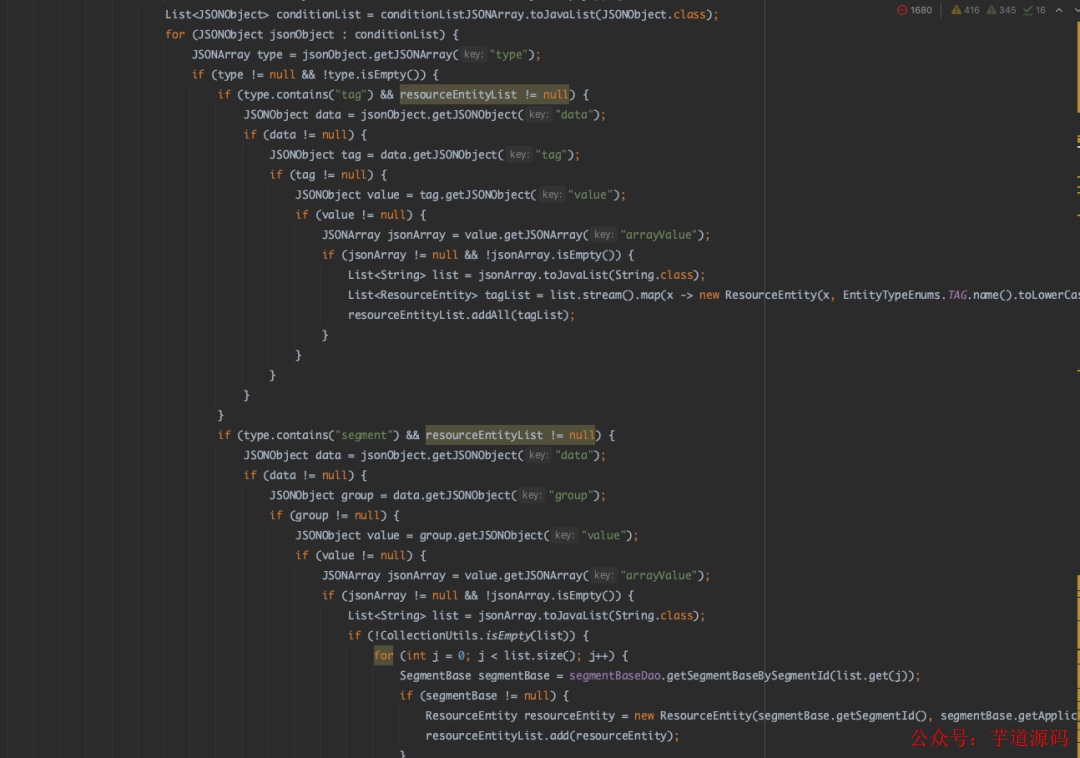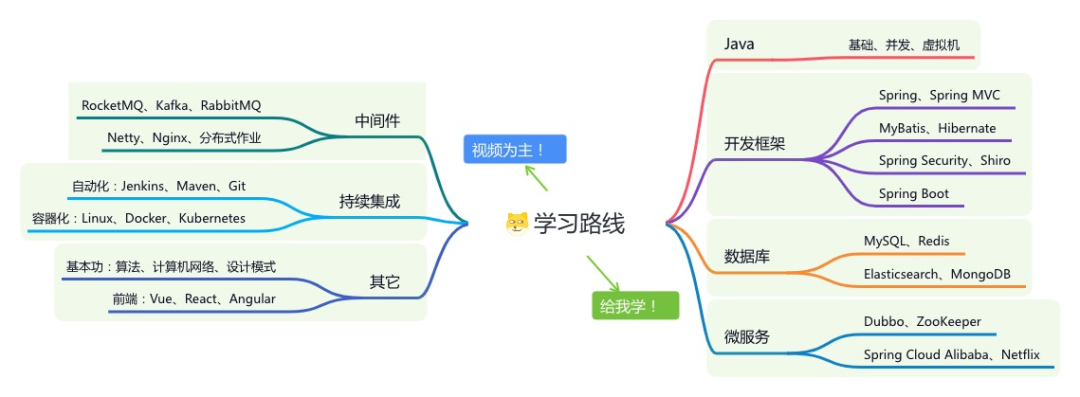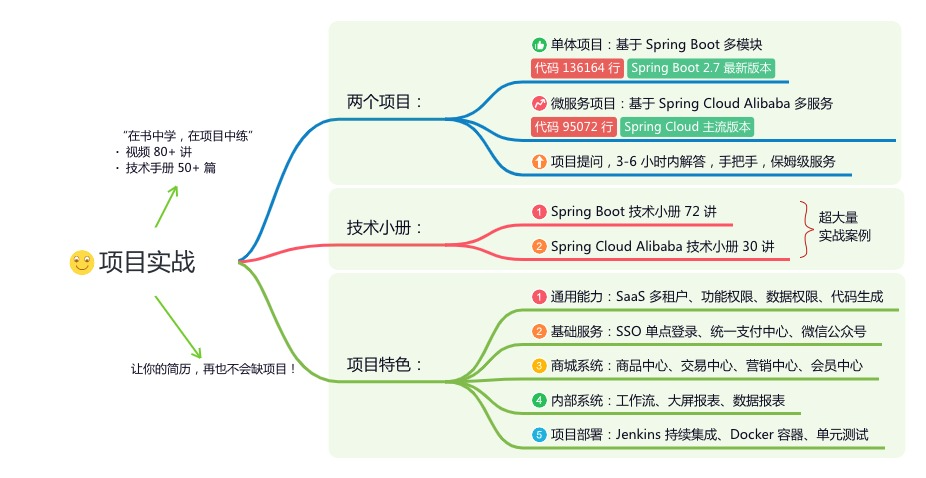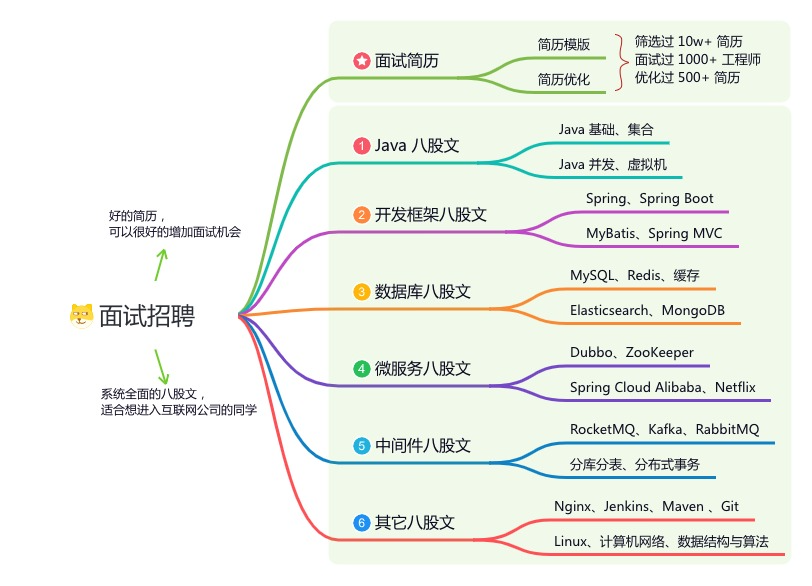👉 这是一个或许对你有用的社群
🐱 一对一交流/面试小册/简历优化/求职解惑,欢迎加入「芋道快速开发平台」知识星球。下面是星球提供的部分资料:
《项目实战(视频)》:从书中学,往事上“练”
《互联网高频面试题》:面朝简历学习,春暖花开
《架构 x 系统设计》:摧枯拉朽,掌控面试高频场景题
《精进 Java 学习指南》:系统学习,互联网主流技术栈
《必读 Java 源码专栏》:知其然,知其所以然

👉这是一个或许对你有用的开源项目
国产 Star 破 10w+ 的开源项目,前端包括管理后台 + 微信小程序,后端支持单体和微服务架构。
功能涵盖 RBAC 权限、SaaS 多租户、数据权限、商城、支付、工作流、大屏报表、微信公众号、CRM 等等功能:
Boot 仓库:https://gitee.com/zhijiantianya/ruoyi-vue-pro
Cloud 仓库:https://gitee.com/zhijiantianya/yudao-cloud
视频教程:https://doc.iocoder.cn
【国内首批】支持 JDK 21 + SpringBoot 3.2.2、JDK 8 + Spring Boot 2.7.18 双版本

接手新项目一言难尽,别的不说单单就一个 @Transactional 注解用的一塌糊涂,五花八门的用法,很大部分还失效无法回滚。

有意识的在涉及事务相关方法上加@Transactional注解,是个好习惯。不过,很多同学只是下意识地添加这个注解,一旦功能正常运行,很少有人会深入验证异常情况下事务是否能正确回滚。@Transactional 注解虽然用起来简单,但这货总是能在一些你意想不到的情况下失效,防不胜防!
我把这些事务问题归结成了三类:不必要、不生效、不回滚,接下用一些demo演示下各自的场景。
不必要
1. 无需事务的业务
在没有事务操作的业务方法上使用 @Transactional 注解,比如:用在仅有查询或者一些 HTTP 请求的方法,虽然加上影响不大,但从编码规范的角度来看还是不够严谨,建议去掉。
@Transactional
public String testQuery() {
standardBak2Service.getById(1L);
return "testB";
}2. 事务范围过大
有些同学为了省事直接将 @Transactional 注解加在了类上或者抽象类上,这样做导致的问题就是类内的方法或抽象类的实现类中所有方法全部都被事务管理 。增加了不必要的性能开销或复杂性,建议按需使用,只在有事务逻辑的方法上加@Transactional。
@Transactional
public abstract class BaseService {
}
@Slf4j
@Service
public class TestMergeService extends BaseService{
private final TestAService testAService;
public String testMerge() {
testAService.testA();
return "ok";
}
}如果在类中的方法上添加 @Transactional 注解,它将覆盖类级别的事务配置。例如,类级别上配置了只读事务,方法级别上的 @Transactional 注解也会覆盖该配置,从而启用读写事务。
@Transactional(readOnly = true)
public class TestMergeService {
private final TestBService testBService;
private final TestAService testAService;
@Transactional
public String testMerge() {
testAService.testA();
testBService.testB();
return "ok";
}
}基于 Spring Boot + MyBatis Plus + Vue & Element 实现的后台管理系统 + 用户小程序,支持 RBAC 动态权限、多租户、数据权限、工作流、三方登录、支付、短信、商城等功能
项目地址:https://github.com/YunaiV/ruoyi-vue-pro
视频教程:https://doc.iocoder.cn/video/
不生效
3. 方法权限问题
不要把 @Transactional注解加在 private 级别的方法上!
我们知道 @Transactional 注解依赖于Spring AOP切面来增强事务行为,这个 AOP 是通过代理来实现的,而 private 方法恰恰不能被代理的,所以 AOP 对 private 方法的增强是无效的,@Transactional也就不会生效。
@Transactional
private String testMerge() {
testAService.testA();
testBService.testB();
return "ok";
}那如果我在 testMerge() 方法内调用 private 的方法事务会生效吗?
答案:事务会生效
@Transactional
public String testMerge() throws Exception {
ccc();
return "ok";
}
private void ccc() {
testAService.testA();
testBService.testB();
}4. 被用 final 、static 修饰方法
和上边的原因类似,被用 final 、static 修饰的方法上加 @Transactional 也不会生效。
static 静态方法属于类本身的而非实例,因此代理机制是无法对静态方法进行代理或拦截的
final 修饰的方法不能被子类重写,事务相关的逻辑无法插入到 final 方法中,代理机制无法对 final 方法进行拦截或增强。
这些都是java基础概念了,使用时要注意。
@Transactional
public static void b() {
}
@Transactional
public final void b() {
}5. 同类内部方法调用问题
注意了 ,这种情况经常发生啊!
同类内部方法间的调用是 @Transactional 注解失效的重灾区,网上你总能看到方法内部调用另一个同类的方法时,这种调用是不会经过代理的 ,因此事务管理不会生效。但这说法比较片面,要分具体情况。
比如:testMerge() 方法开启事务,调用同类非事务的方法 a() 和 b() ,此时 b() 抛异常,根据事务的传播性 a()、b() 事务均生效。
@Transactional
public String testMerge() {
a();
b();
return "ok";
}
public void a() {
standardBakService.save(testAService.buildEntity());
}
public void b() {
standardBak2Service.save(testBService.buildEntity2());
throw new RuntimeException("b error");
}如果 testMerge() 方法未开启事务,并且在同类中调用了非事务方法 a() 和事务方法 b(),当 b() 抛出异常时,a() 和 b() 的事务都不会生效。因为这种调用直接通过 this 对象进行,未经过代理,因此事务管理无法生效。这经常出问题的!
public String testMerge() {
a();
b();
return "ok";
}
public void a() {
standardBakService.save(testAService.buildEntity());
}
@Transactional
public void b() {
standardBak2Service.save(testBService.buildEntity2());
throw new RuntimeException("b error");
}5.1 独立的 Service 类
要想 b() 方法的事务生效也容易,最简单的方法将它剥离放在独立的Service类注入使用,交给spring管理就行了。不过,这种方式会创建很多类。
@Slf4j
@Service
public class TestBService {
@Transactional
public void b() {
standardBak2Service.save(testBService.buildEntity2());
throw new RuntimeException("b error");
}
}5.2 自注入方式
或者通过自己注入自己的方式解决,尽管解决了问题,逻辑看起来很奇怪,它破坏了依赖注入的原则,虽然 spring 支持我们这样用,还是要注意下循环依赖的问题。
@Slf4j
@Service
public class TestMergeService {
@Autowired
private TestMergeService testMergeService;
public String testMerge() {
a();
testMergeService.b();
return "ok";
}
public void a() {
standardBakService.save(testAService.buildEntity());
}
@Transactional
public void b() {
standardBak2Service.save(testBService.buildEntity2());
throw new RuntimeException("b error");
}
}5.3 手动获取代理对象
b() 方法它不是没被代理嘛,那我们手动获取代理对象调用 b() 方法也可以。通过 AopContext.currentProxy() 方法返回当前的代理对象实例,这样调用代理的方法时,就会经过 AOP 的切面,@Transactional注解就会生效了。
@Slf4j
@Service
public class TestMergeService {
public String testMerge() {
a();
((TestMergeService) AopContext.currentProxy()).b();
return "ok";
}
public void a() {
standardBakService.save(testAService.buildEntity());
}
@Transactional
public void b() {
standardBak2Service.save(testBService.buildEntity2());
throw new RuntimeException("b error");
}
}6. Bean 未被 spring 管理
上边我们知道 @Transactional 注解通过 AOP 来管理事务,而 AOP 依赖于代理机制。因此,Bean 必须由Spring管理实例! 要确保为类加上如 @Controller、@Service 或 @Component注解,让其被Spring所管理,这很容易忽视。
@Service
public class TestBService {
@Transactional
public String testB() {
standardBak2Service.save(entity2);
return "testB";
}
}7. 异步线程调用
如果我们在 testMerge() 方法中使用异步线程执行事务操作,通常也是无法成功回滚的,来个具体的例子。
testMerge() 方法在事务中调用了 testA(),testA() 方法中开启了事务。接着,在 testMerge() 方法中,我们通过一个新线程调用了 testB(),testB() 中也开启了事务,并且在 testB() 中抛出了异常。
此时的回滚情况是怎样的呢?
@Transactional
public String testMerge() {
testAService.testA();
new Thread(() -> {
try {
testBService.testB();
} catch (Exception e) {
// e.printStackTrace();
throw new RuntimeException();
}
}).start();
return "ok";
}
@Transactional
public String testB() {
DeepzeroStandardBak2 entity2 = buildEntity2();
dataImportJob2Service.save(entity2);
throw new RuntimeException("test2");
}
@Transactional
public String testA() {
DeepzeroStandardBak entity = buildEntity();
standardBakService.save(entity);
return "ok";
}答案是:testA() 不回滚、 testB() 回滚。
testA() 无法回滚是因为没有捕获到新线程中 testB()抛出的异常;testB()方法可以回滚,是因为事务管理器只对当前线程中的事务有效,因此在新线程中执行的事务会回滚。
由于在多线程环境下,Spring 的事务管理器不会跨线程传播事务,事务的状态(如事务是否已开启)是存储在线程本地的 ThreadLocal 来存储和管理事务上下文信息。这意味着每个线程都有一个独立的事务上下文,事务信息在不同线程之间不会共享。
8. 不支持事务的引擎
不支持事务的数据库引擎不在此次 Review 范围内,只做了解就好。我们通常使用的关系型数据库,如 MySQL,默认使用支持事务的 InnoDB 引擎,而非事务的 MyISAM 引擎则使用较少。
以前开启启用 MyISAM 引擎是为了提高查询效率。不过,现在非关系型数据库如 Redis、MongoDB 和 Elasticsearch 等中间件提供了更高性价比的解决方案。
基于 Spring Cloud Alibaba + Gateway + Nacos + RocketMQ + Vue & Element 实现的后台管理系统 + 用户小程序,支持 RBAC 动态权限、多租户、数据权限、工作流、三方登录、支付、短信、商城等功能
项目地址:https://github.com/YunaiV/yudao-cloud
视频教程:https://doc.iocoder.cn/video/
不回滚
9. 用错传播属性
@Transactional注解有个关键的参数propagation,它控制着事务的传播行为,有时事务传播参数配置错误也会导致事务的不回滚。
propagation 支持 7 种事务传播特性:
REQUIRED:默认的传播行为 ,如果当前没有事务,则创建一个新事务;如果存在事务,则加入当前事务。MANDATORY:支持当前事务,如果不存在则抛出异常NEVER:非事务性执行,如果存在事务,则抛出异常REQUIRES_NEW:无论当前是否存在事务,都会创建一个新事务,原有事务被挂起。NESTED:嵌套事务,被调用方法在一个嵌套的事务中运行,这个事务依赖于当前的事务。SUPPORTS:如果当前存在事务,则加入;如果没有,就以非事务方式执行。NOT_SUPPORTED:以非事务方式执行,如果当前存在事务,将其挂起。
为了加深印象,我用案例来模拟下每种特性的使用场景。
REQUIRED
REQUIRED 是默认的事务传播行为。如果 testMerge() 方法开启了事务,那么其内部调用的 testA() 和 testB() 方法也将加入这个事务。如果 testMerge() 没有开启事务,而 testA() 和 testB() 方法上使用了 @Transactional 注解,这些方法将各自创建新的事务,只控制自身的回滚。
@Component
@RequiredArgsConstructor
@Slf4j
@Service
public class TestMergeService {
private final TestBService testBService;
private final TestAService testAService;
@Transactional
public String testMerge() {
testAService.testA();
testBService.testB();
return "ok";
}
}
@Transactional
public String testA() {
log.info("testA");
DeepzeroStandardBak entity = buildEntity();
standardBakService.save(entity);
return "ok";
}
@Transactional
public String testB() {
log.info("testB");
DeepzeroStandardBak2 entity2 = buildEntity2();
standardBak2Service.save(entity2);
throw new RuntimeException("testB");
}MANDATORY
MANDATORY 传播特性简单来说就是只能被开启事务的上层方法调用,例如 testMerge() 方法未开启事务调用 testB() 方法,那么将抛出异常;testMerge() 开启事务调用 testB() 方法,则加入当前事务。
@Component
@RequiredArgsConstructor
@Slf4j
@Service
public class TestMergeService {
private final TestBService testBService;
private final TestAService testAService;
public String testMerge() {
testAService.testA();
testBService.testB();
return "ok";
}
}
@Transactional
public String testA() {
log.info("testA");
DeepzeroStandardBak entity = buildEntity();
standardBakService.save(entity);
return "ok";
}
@Transactional(propagation = Propagation.MANDATORY)
public String testB() {
log.info("testB");
DeepzeroStandardBak2 entity2 = buildEntity2();
standardBak2Service.save(entity2);
throw new RuntimeException("testB");
}抛出的异常信息
org.springframework.transaction.IllegalTransactionStateException: No existing transaction found for transaction marked with propagation 'mandatory'
NEVER
NEVER 传播特性是强制你的方法只能以非事务方式运行,如果方法存在事务操作会抛出异常,我实在是没想到有什么使用场景。
@Transactional(propagation = Propagation.NEVER)
public String testB() {
log.info("testB");
DeepzeroStandardBak2 entity2 = buildEntity2();
standardBak2Service.save(entity2);
// throw new RuntimeException("testB");
return "ok";
}抛出的异常信息
org.springframework.transaction.IllegalTransactionStateException: Existing transaction found for transaction marked with propagation 'never'
REQUIRES_NEW
我们在使用 Propagation.REQUIRES_NEW 传播特性时,不论当前事务的状态如何,调用该方法都会创建一个新的事务。
例如,testMerge() 方法开始一个事务,调用 testB() 方法时,它会暂停 testMerge() 的事务,并启动一个新的事务。如果 testB() 方法内部发生异常,新事务会回滚,但原先挂起的事务不会受影响。这意味着,挂起的事务不会因为新事务的回滚而受到影响,也不会因为新事务的失败而回滚。
@Transactional
public String testMerge() {
testAService.testA();
testBService.testB();
return "ok";
}
@Transactional
public String testA() {
log.info("testA");
DeepzeroStandardBak entity = buildEntity();
standardBakService.save(entity);
return "ok";
}
@Transactional(propagation = Propagation.REQUIRES_NEW)
public String testB() {
log.info("testB");
DeepzeroStandardBak2 entity2 = buildEntity2();
standardBak2Service.save(entity2);
throw new RuntimeException("testB");
}NESTED
方法的传播行为设置为 NESTED,其内部方法会开启一个新的嵌套事务(子事务)。在没有外部事务的情况下 NESTED 与 REQUIRED 效果相同;存在外部事务的情况下,一旦外部事务回滚,它会创建一个嵌套事务(子事务)。
也就是说外部事务回滚时,子事务会跟着回滚;但子事务的回滚不会对外部事务和其他同级事务造成影响。
@Component
@RequiredArgsConstructor
@Slf4j
@Service
public class TestMergeService {
private final TestBService testBService;
private final TestAService testAService;
@Transactional
public String testMerge() {
testAService.testA();
testBService.testB();
throw new RuntimeException("testMerge");
return "ok";
}
}
@Transactional
public String testA() {
log.info("testA");
DeepzeroStandardBak entity = buildEntity();
standardBakService.save(entity);
return "ok";
}
@Transactional(propagation = Propagation.NESTED)
public String testB() {
log.info("testB");
DeepzeroStandardBak2 entity2 = buildEntity2();
standardBak2Service.save(entity2);
throw new RuntimeException("testB");
}NOT_SUPPORTED
NOT_SUPPORTED 事务传播特性表示该方法必须以非事务方式运行。当方法 testMerge() 开启事务并调用事务方法 testA() 和 testB() 时,如果 testA() 和 testB() 的事务传播特性为 NOT_SUPPORTED,那么 testB() 将以非事务方式运行,并挂起当前的事务。
默认传播特性的情况下 testB() 异常事务加入会导致 testA() 回滚,而挂起的意思是说,testB() 其内部一旦抛出异常,不会影响 testMerge() 中其他 testA() 方法的回滚。
@Component
@RequiredArgsConstructor
@Slf4j
@Service
public class TestMergeService {
private final TestBService testBService;
private final TestAService testAService;
@Transactional
public String testMerge() {
testAService.testA();
testBService.testB();
return "ok";
}
}
@Transactional
public String testA() {
log.info("testA");
DeepzeroStandardBak entity = buildEntity();
standardBakService.save(entity);
return "ok";
}
@Transactional(propagation = Propagation.NOT_SUPPORTED)
public String testB() {
log.info("testB");
DeepzeroStandardBak2 entity2 = buildEntity2();
standardBak2Service.save(entity2);
throw new RuntimeException("testB");
}SUPPORTS
如果当前方法的事务传播特性是 SUPPORTS,那么只有在调用该方法的上层方法开启了事务的情况下,该方法的事务才会有效。如果上层方法没有开启事务,那么该方法的事务特性将无效。
例如,如果入口方法 testMerge() 没有开启事务,而 testMerge() 调用的方法 testA() 和 testB() 的事务传播特性为 SUPPORTS,那么由于 testMerge() 没有事务,testA() 和 testB() 将以非事务方式执行。即使在这些方法上加上 @Transactional 注解,也不会回滚异常。
@Component
@RequiredArgsConstructor
@Slf4j
@Service
public class TestMergeService {
private final TestBService testBService;
private final TestAService testAService;
public String testMerge() {
testAService.testA();
testBService.testB();
return "ok";
}
}
@Transactional(propagation = Propagation.SUPPORTS)
public String testA() {
log.info("testA");
DeepzeroStandardBak entity = buildEntity();
standardBakService.save(entity);
return "ok";
}
@Transactional(propagation = Propagation.SUPPORTS)
public String testB() {
log.info("testB");
DeepzeroStandardBak2 entity2 = buildEntity2();
standardBak2Service.save(entity2);
throw new RuntimeException("testB");
}10. 自己吞了异常
在整个 review 的过程中我发现导致事务不回滚的场景,多数是开发同学在业务代码中手动 try...catch 捕获了异常,然后又没抛出异常....
比如:testMerge() 方法开启了事务,并调用了非事务方法 testA() 和 testB(),同时在 testMerge() 中捕获了异常。如果 testB() 中发生了异常并抛出,但 testMerge() 捕获了这个异常而没有继续抛出,Spring 事务将无法捕获到异常,从而无法进行回滚。
@RequiredArgsConstructor
@Slf4j
@Service
public class TestMergeService {
private final TestBService testBService;
private final TestAService testAService;
@Transactional
public String testMerge() {
try {
testAService.testA();
testBService.testB();
} catch (Exception e) {
log.error("testMerge error:{}", e);
}
return "ok";
}
}
@Service
public class TestAService {
public String testA() {
standardBakService.save(entity);
return "ok";
}
}
@Service
public class TestBService {
public String testB() {
standardBakService.save(entity2);
throw new RuntimeException("test2");
}
}为了确保 Spring 事务能够正常回滚,需要我们在 catch 块中主动重新抛出它能够处理的 RuntimeException 或者 Error 类型的异常。
@Transactional
public String testMerge() {
try {
testAService.testA();
testBService.testB();
} catch (Exception e) {
log.error("testMerge error:{}", e);
throw new RuntimeException(e);
}
return "ok";
}捕获异常并不意味着一定不会回滚 ,这取决于具体情况。
例如,当 testB() 方法上也加上了 @Transactional 注解时,如果在该方法中发生异常,事务会捕获到这个异常。由于事务传播的特性,testB() 的事务会合并到上层方法的事务中。因此,即使在 testMerge() 中捕获了异常而未抛出,事务仍然可以成功回滚。
@Transactional
public String testB() {
DeepzeroStandardBak2 entity2 = buildEntity2();
dataImportJob2Service.save(entity2);
throw new RuntimeException("test2");
// return "ok";
}但这有个提前,必须在 testMerge() 方法上添加 @Transactional 注解以启用事务。如果 testMerge() 方法没有开启事务,不论其内部是否使用 try 块,都只能部分回滚 testB(),而 testA() 将无法回滚。
11. 事务无法捕获的异常
Spring 的事务默认会回滚 RuntimeException 及其子类,以及 Error 类型的异常。
如果抛出的是其他类型的异常,例如 checked exceptions(检查型异常),即继承自 Exception 但不继承自 RuntimeException 的异常,比如 SQLException、DuplicateKeyException,事务将不会回滚。
所以,我们在主动抛出异常时,要确保该异常是事务能够捕获的类型。
@Transactional
public String testMerge() throws Exception {
try {
testAService.testA();
testBService.testB();
} catch (Exception e) {
log.error("testMerge error:{}", e);
// throw new RuntimeException(e);
throw new Exception(e);
}
return "ok";
}如果你非要抛出默认情况下不会导致事务回滚的异常,务必要在 @Transactional 注解的 rollbackFor 参数中明确指定该异常,这样才能进行回滚。
@Transactional(rollbackFor = Exception.class)
public String testMerge() throws Exception {
try {
testAService.testA();
testBService.testB();
} catch (Exception e) {
log.error("testMerge error:{}", e);
// throw new RuntimeException(e);
throw new Exception(e);
}
return "ok";
}问问你身边的同学,哪些异常属于运行时异常,哪些属于检查型异常,十有八九他们可能无法给出准确的回答!
所以减少出现 bug 的风险,我建议使用 @Transactional 注解时,将 rollbackFor 参数设置为 Exception 或 Throwable,这样可以扩大事务回滚的范围。
12. 自定义异常范围问题
针对不同业务定制异常类型是比较常见的做法,@Transactional 注解的 rollbackFor 参数支持自定义的异常,但我们往往习惯于将这些自定义异常继承自 RuntimeException。
那么这就出现和上边同样的问题,事务的范围不足,许多异常类型仍然无法触发事务回滚。
@Transactional(rollbackFor = CustomException.class)
public String testMerge() throws Exception {
try {
testAService.testA();
testBService.testB();
} catch (Exception e) {
log.error("testMerge error:{}", e);
// throw new RuntimeException(e);
throw new Exception(e);
}
return "ok";
}想要解决这个问题,可以在 catch 中主动抛出我们自定义的异常。
@Transactional(rollbackFor = CustomException.class)
public String testMerge() throws Exception {
try {
testAService.testA();
testBService.testB();
} catch (Exception e) {
log.error("testMerge error:{}", e);
throw new CustomException(e);
}
return "ok";
}13. 嵌套事务问题
还有一种场景就是嵌套事务问题,比如,我们在 testMerge() 方法中调用了事务方法 testA() 和事务方法 testB(),此时不希望 testB() 抛出异常让整个 testMerge() 都跟着回滚;这就需要单独 try catch 处理 testB() 的异常,不让异常在向上抛。
@RequiredArgsConstructor
@Slf4j
@Service
public class TestMergeService {
private final TestBService testBService;
private final TestAService testAService;
@Transactional
public String testMerge() {
testAService.testA();
try {
testBService.testB();
} catch (Exception e) {
log.error("testMerge error:{}", e);
}
return "ok";
}
}
@Service
public class TestAService {
@Transactional
public String testA() {
standardBakService.save(entity);
return "ok";
}
}
@Service
public class TestBService {
@Transactional
public String testB() {
standardBakService.save(entity2);
throw new RuntimeException("test2");
}
}总结
上面的关于 @Transactional 注解的使用注意事项是我在代码审查和搜集网络观点后整理出的。之前我也写过类似的文章,但当时内容不够全面。这次的补充更为详尽,涵盖了更多细节。开发工作只是整体工作量的一小部分,更多时间实际上花在了自测和验证上。希望这些案例对大家有所收获,少踩坑。
欢迎加入我的知识星球,全面提升技术能力。
👉 加入方式,“长按”或“扫描”下方二维码噢:

星球的内容包括:项目实战、面试招聘、源码解析、学习路线。





文章有帮助的话,在看,转发吧。
谢谢支持哟 (*^__^*)




















 7067
7067

 被折叠的 条评论
为什么被折叠?
被折叠的 条评论
为什么被折叠?








